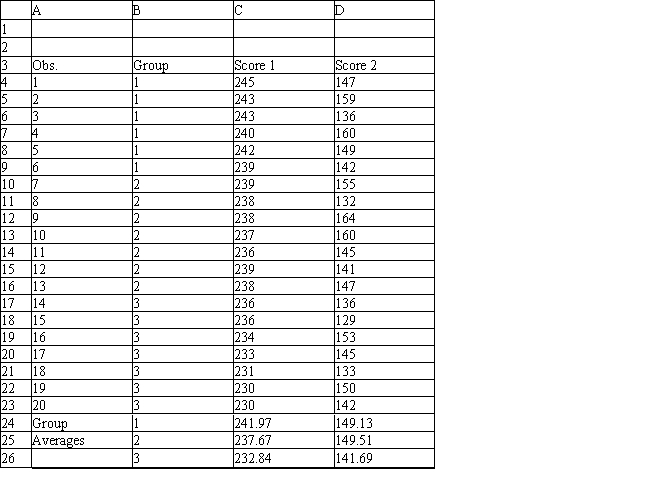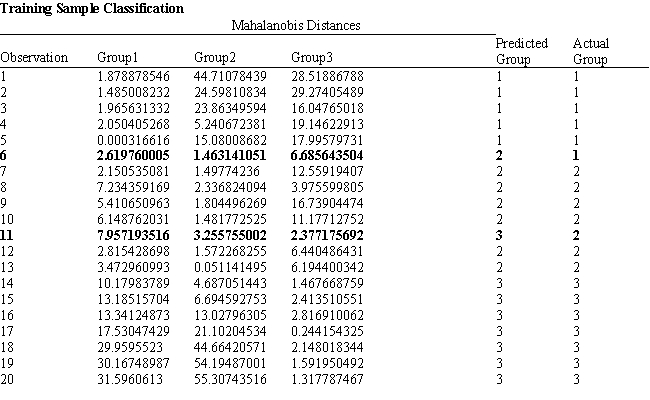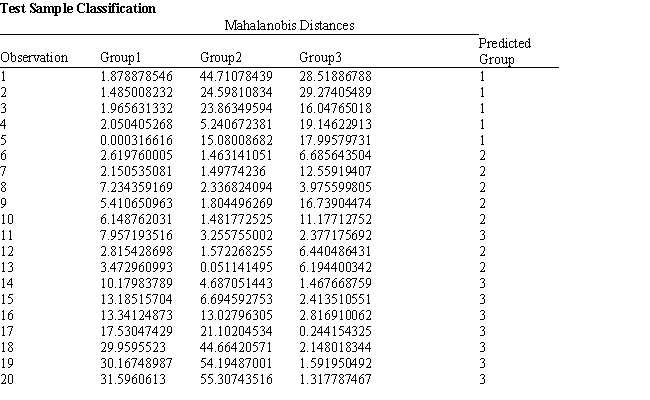Exhibit 10.5
The information below is used for the following questions.
A counselor wants to classify people as belonging to one of three groups based on two scores. The counselor has collected data on twenty people who are known to be in one of the three groups. The data for the problem are in the following spreadsheet. Relevant output is also included. 




-Refer to Exhibit 10.5. Based on the 20 observations in the model complete the following confusion/classification matrix. 
Definitions:
Stable Characteristics
Traits or attributes of an individual that are consistent over time and across situations.
Internal Characteristics
Traits, qualities, or features that originate from within an individual, shaping their behavior and personality.
Kelley's Covariation
A theory proposed by Harold Kelley that suggests an individual determines the cause of an event by considering whether the observed behavior covaries or changes across time, place, or actors.
Attribution Theory
A psychological theory focused on how individuals interpret and understand their own and others' behaviors and actions by attributing them to internal or external causes.
Q9: Affinity analysis is a data mining technique
Q30: Refer to Exhibit 11.20. What formulas should
Q41: A _ provides a visual summary of
Q42: If you have historical data for any
Q54: Using the information in Exhibit 12.3, what
Q58: Refer to Exhibit 11.3. What is the
Q60: The amount of opportunity lost in making
Q63: Refer to Exhibit 7.1. Which of the
Q78: Refer to Exhibit 13.3. What is the
Q88: Refer to Exhibit 11.22. Interpret the R<sup>2</sup>